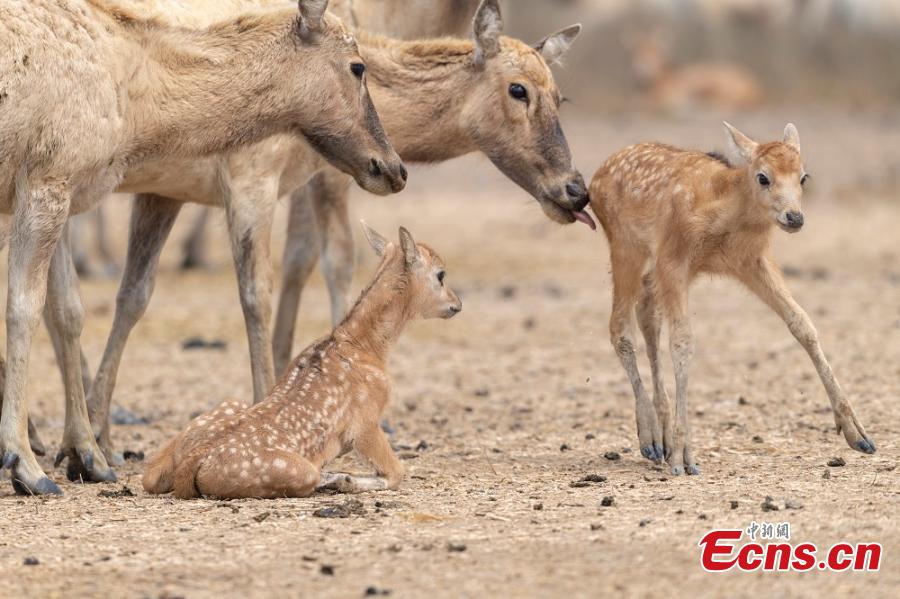
A herd of milu deer are seen on a wetland in the Dafeng Milu National Nature Reserve in Yancheng City, East China's Jiangsu Province, in March. Milu, also known as Pere David's deer, is a species endemic to China, but overhunting and habitat loss led to its near extinction in the early 20th century. The species, still under A-level state protection in China, was named after Armand David, a French missionary and naturalist who first recorded the existence of the deer in China in 1865. The animal's gestation period is approximately nine months, after which a single offspring is born, usually in March or April. (Photo: China News Service/Sun Huajin)
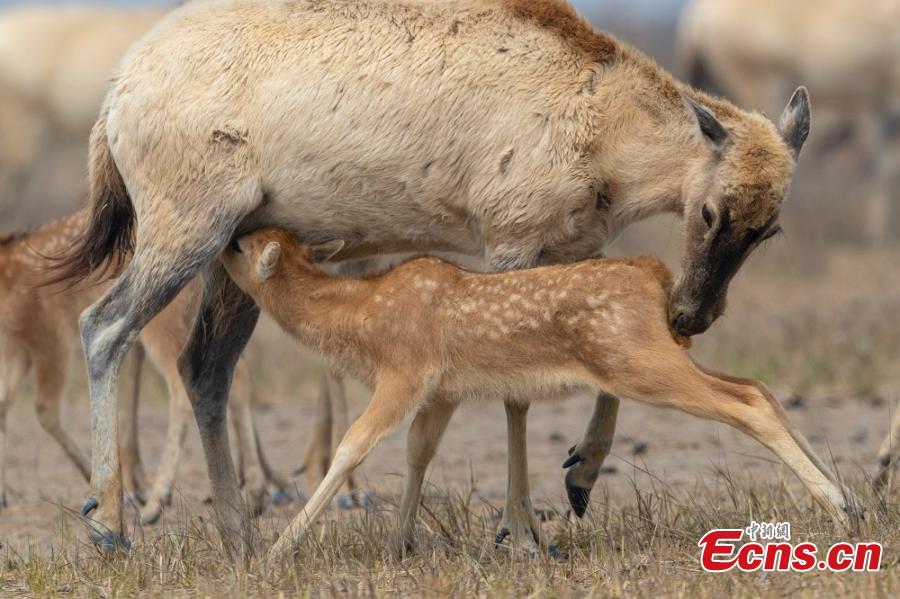
A herd of milu deer are seen on a wetland in the Dafeng Milu National Nature Reserve in Yancheng City, East China's Jiangsu Province, in March. Milu, also known as Pere David's deer, is a species endemic to China, but overhunting and habitat loss led to its near extinction in the early 20th century. The species, still under A-level state protection in China, was named after Armand David, a French missionary and naturalist who first recorded the existence of the deer in China in 1865. The animal's gestation period is approximately nine months, after which a single offspring is born, usually in March or April. (Photo: China News Service/Sun Huajin)
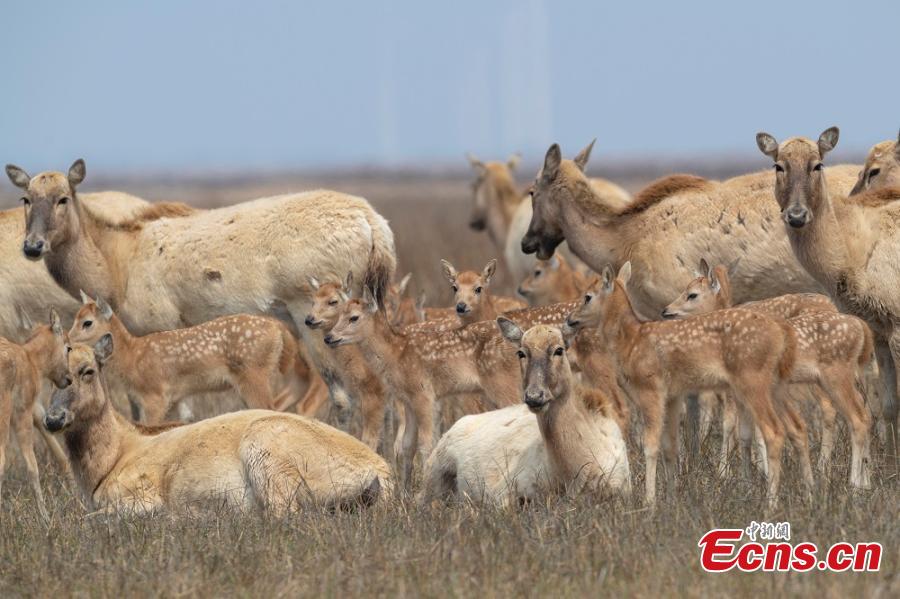
A herd of milu deer are seen on a wetland in the Dafeng Milu National Nature Reserve in Yancheng City, East China's Jiangsu Province, in March. Milu, also known as Pere David's deer, is a species endemic to China, but overhunting and habitat loss led to its near extinction in the early 20th century. The species, still under A-level state protection in China, was named after Armand David, a French missionary and naturalist who first recorded the existence of the deer in China in 1865. The animal's gestation period is approximately nine months, after which a single offspring is born, usually in March or April. (Photo: China News Service/Sun Huajin)
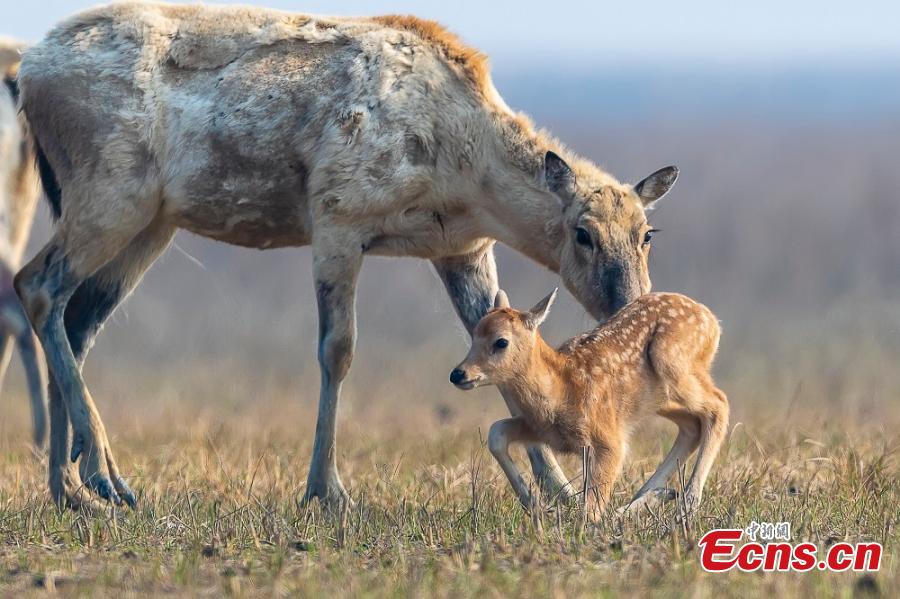
A herd of milu deer are seen on a wetland in the Dafeng Milu National Nature Reserve in Yancheng City, East China's Jiangsu Province, in March. Milu, also known as Pere David's deer, is a species endemic to China, but overhunting and habitat loss led to its near extinction in the early 20th century. The species, still under A-level state protection in China, was named after Armand David, a French missionary and naturalist who first recorded the existence of the deer in China in 1865. The animal's gestation period is approximately nine months, after which a single offspring is born, usually in March or April. (Photo: China News Service/Sun Huajin)
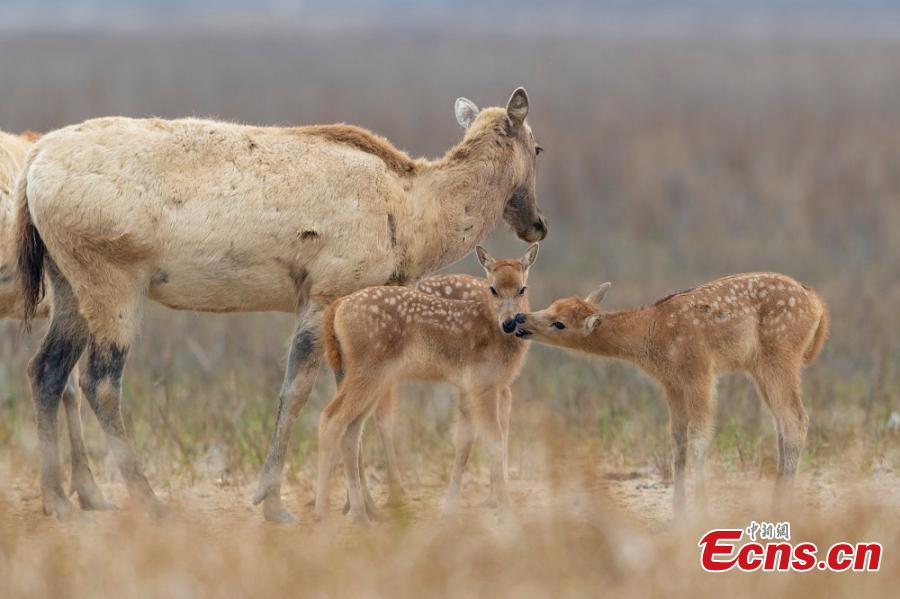
A herd of milu deer are seen on a wetland in the Dafeng Milu National Nature Reserve in Yancheng City, East China's Jiangsu Province, in March. Milu, also known as Pere David's deer, is a species endemic to China, but overhunting and habitat loss led to its near extinction in the early 20th century. The species, still under A-level state protection in China, was named after Armand David, a French missionary and naturalist who first recorded the existence of the deer in China in 1865. The animal's gestation period is approximately nine months, after which a single offspring is born, usually in March or April. (Photo: China News Service/Sun Huajin)











